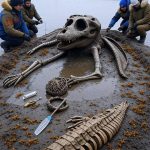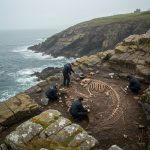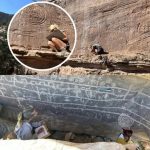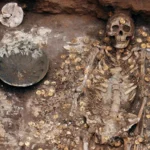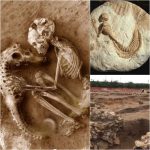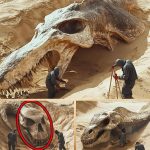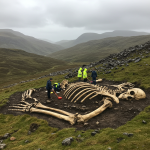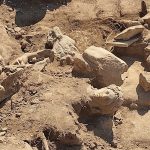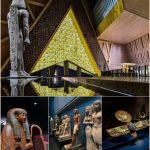The Terracotta Warriors: Silent Guardians of China’s First Emperor
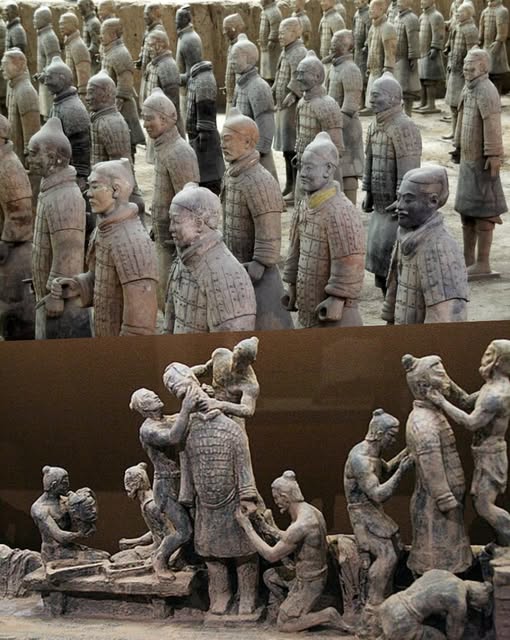
Related Movies:
Related Movies:
Related Movies:
The Terracotta Warriors: Silent Guardians of China’s First Emperor
In the heart of China’s Shaanxi Province lies an extraordinary and mysterious archaeological site that has captured the imagination of historians, archaeologists, and the general public alike for decades. The Terracotta Army, discovered in 1974, is one of the most significant and awe-inspiring finds in the history of archaeology, offering an unparalleled glimpse into ancient China’s culture, artistry, and the remarkable legacy of Emperor Qin Shi Huang. These life-sized clay soldiers, horses, and chariots were buried with the emperor to accompany him in the afterlife, a monumental gesture that underscores the emperor’s belief in immortality and his obsession with power.
The Terracotta Army is not just a collection of statues but a profound historical treasure that continues to provide insight into the military prowess and artistic achievements of one of the world’s most powerful empires. In this article, we will delve into the history of the Terracotta Army, explore its remarkable craftsmanship, and discuss the significance of the discovery in the context of China’s ancient history.

The Discovery and Unveiling of the Terracotta Army
In March 1974, a group of farmers digging a well near the ancient capital of Xi’an stumbled upon a hidden treasure. As their shovels struck the earth, they uncovered fragments of terracotta figures buried deep beneath the soil. The discovery soon led to the realization that they had unearthed one of the greatest archaeological finds of the 20th century: the Terracotta Army. What began as a simple agricultural task turned into an excavation that would reveal the vast army of clay soldiers and their associated artifacts, some of which had remained buried for over two millennia.
At first, the discovery was shrouded in mystery. No one could fathom the scale of what lay beneath the surface. In the following years, a team of archaeologists from China and around the world meticulously excavated the site, revealing a sprawling burial complex that included thousands of life-sized terracotta soldiers, chariots, and horses. To date, more than 8,000 soldiers, along with 600 horses and 130 chariots, have been uncovered. This incredible discovery has provided scholars with invaluable insight into the life and death of Emperor Qin Shi Huang, the first emperor of China.

The Origins of the Terracotta Army
The Terracotta Army was created to protect and accompany the first emperor of China, Qin Shi Huang, in the afterlife. Qin Shi Huang, born Ying Zheng, ascended the throne at the age of 13 in 246 BCE and became the first ruler to unify China under a single imperial dynasty in 221 BCE. During his reign, Qin Shi Huang undertook numerous ambitious projects, including the construction of the Great Wall of China and the establishment of a centralized bureaucratic system. He sought immortality and a means to secure his power beyond death, believing that a powerful army would be necessary to safeguard him in the afterlife.
The emperor’s tomb complex, including the Terracotta Army, was built to accompany him into the afterlife and protect him from any threats that might arise in the spiritual realm. The scale of the project is staggering: over 700,000 workers were employed to build the emperor’s mausoleum and its surrounding structures, including the vast army of clay soldiers. The army was arranged in military formation, with infantry, archers, cavalry, and chariots, each positioned as if preparing for battle. The placement and structure of the Terracotta Army reflect the military organization and strategic thinking of the Qin Dynasty.
The Terracotta Army was constructed between 246 and 208 BCE, and the soldiers were strategically placed around the emperor’s tomb. These figures were buried in three main pits near the tomb, with the majority of the soldiers positioned in the largest pit, which was originally thought to be the headquarters of the army. The soldiers were not intended to be viewed by the public; rather, they were meant to remain hidden from sight, protecting the emperor in the afterlife from any spirits or enemies.
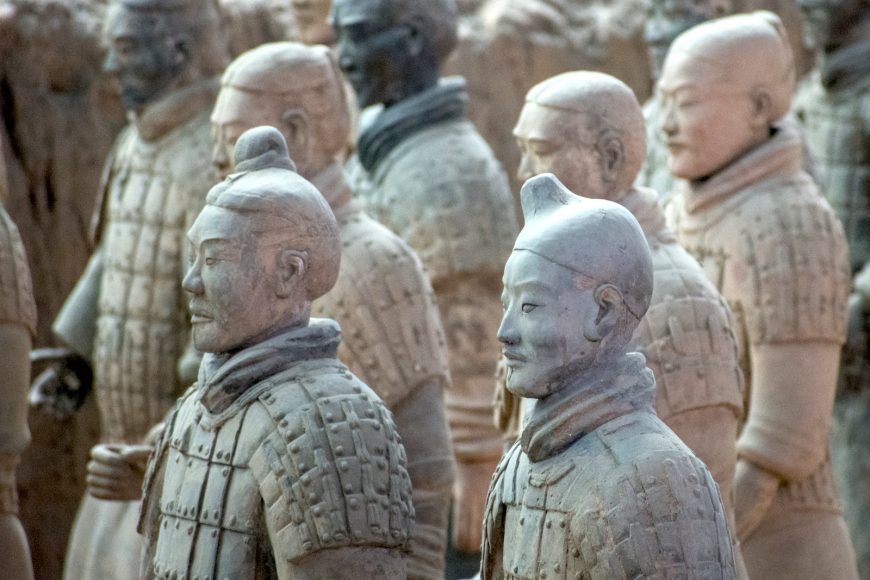
Craftsmanship and Artistry
One of the most remarkable aspects of the Terracotta Army is its craftsmanship. The soldiers are not mass-produced replicas, but rather individually crafted figures with unique facial features, hairstyles, and clothing. The level of detail in the faces, expressions, and clothing is astonishing, reflecting the high degree of skill and artistry of the ancient craftsmen who created them. It is believed that the soldiers were crafted by a team of artisans working in specialized workshops. The figures were initially created as separate parts—heads, torsos, arms, and legs—which were then assembled and placed in their final positions.
The facial features of each soldier are distinctive, and no two figures are exactly alike. The soldiers’ expressions vary from serious and stern to calm and contemplative, offering a glimpse into the diverse range of emotions and personalities that were intended to inhabit this spiritual army. The clothing and armor of the soldiers also reflect the Qin Dynasty’s military attire, with details such as armor, boots, and helmets that were used by the soldiers of the time. Some figures are even depicted with intricate facial hair or elaborate hairstyles, further highlighting the attention to detail.
In addition to the soldiers, the Terracotta Army includes chariots and horses, which were equally meticulously crafted. The horses, like the soldiers, were created to be life-sized and are believed to have been modeled after real horses that were used by the emperor’s army. These horses, along with the chariots, were intended to be a symbol of the emperor’s military strength and power.
The creation of the Terracotta Army was a monumental task that required immense resources, planning, and manpower. The figures were made from a special clay mixture, which was fired at high temperatures to ensure their durability. Once completed, the figures were painted with bright colors, although much of the original paint has faded or been removed over time due to the effects of exposure to air and light.
/https%3A%2F%2Ftf-cmsv2-smithsonianmag-media.s3.amazonaws.com%2Ffiler_public%2Feb%2F07%2Feb072ca5-f39d-4932-9e8c-8a837218c2e0%2Fgettyimages-522660430.jpg)
The Role of the Terracotta Army in Ancient Chinese Beliefs
The Terracotta Army’s role in ancient Chinese beliefs cannot be overstated. The Qin Dynasty, like many other ancient civilizations, placed great importance on the concept of the afterlife. It was believed that the emperor’s spirit would continue to live on after death, but he would need protection from various forces, both physical and spiritual. The Terracotta Army, along with other burial objects such as weapons, chariots, and treasures, was meant to ensure that the emperor would have everything he needed in the afterlife, including a powerful army to defend him.
The military organization of the army reflected the actual military structure of the Qin Dynasty. The soldiers were arranged in formations that would have been used in battle, with generals, infantry, and cavalry arranged strategically across the pits. This attention to detail suggests that the army was intended to serve as a reflection of the real-world military forces that had once protected the emperor during his reign.
In addition to its military function, the Terracotta Army also had symbolic significance. The figures were believed to serve as guardians of the emperor’s tomb, ensuring that no harm would come to the emperor’s spirit. The army’s role was not only to defend the emperor but also to assist him in his journey to the afterlife. The belief in the afterlife and the need for protection from malevolent spirits was deeply ingrained in ancient Chinese culture, and the Terracotta Army serves as a vivid representation of these beliefs.

The Significance of the Terracotta Army Today
The discovery of the Terracotta Army in 1974 was a watershed moment in the field of archaeology. It not only provided new insights into the military history and culture of ancient China but also sparked global interest in the Qin Dynasty and its first emperor. The Terracotta Army has since become a symbol of China’s rich cultural heritage and an iconic representation of the country’s ancient past.
Today, the Terracotta Army is one of China’s most important archaeological sites, attracting millions of visitors from around the world each year. The site has been designated as a UNESCO World Heritage Site, and ongoing excavations continue to reveal new information about the emperor’s tomb and the artifacts buried with him. The Terracotta Army remains a testament to the ingenuity, artistry, and spiritual beliefs of the ancient Chinese civilization, providing a window into a past that has long been buried beneath the earth.
In conclusion, the Terracotta Army stands as one of the greatest archaeological discoveries in history, offering a fascinating glimpse into the world of ancient China. From its remarkable craftsmanship to its symbolic significance, the Terracotta Army remains an enduring testament to the legacy of Qin Shi Huang and the grandeur of his reign. As new discoveries continue to emerge, the Terracotta Army will undoubtedly continue to captivate the world, inspiring awe and wonder for generations to come.
#TerracottaWarriors #QinShiHuang #AncientChina #Archaeology #History #CulturalHeritage #China
